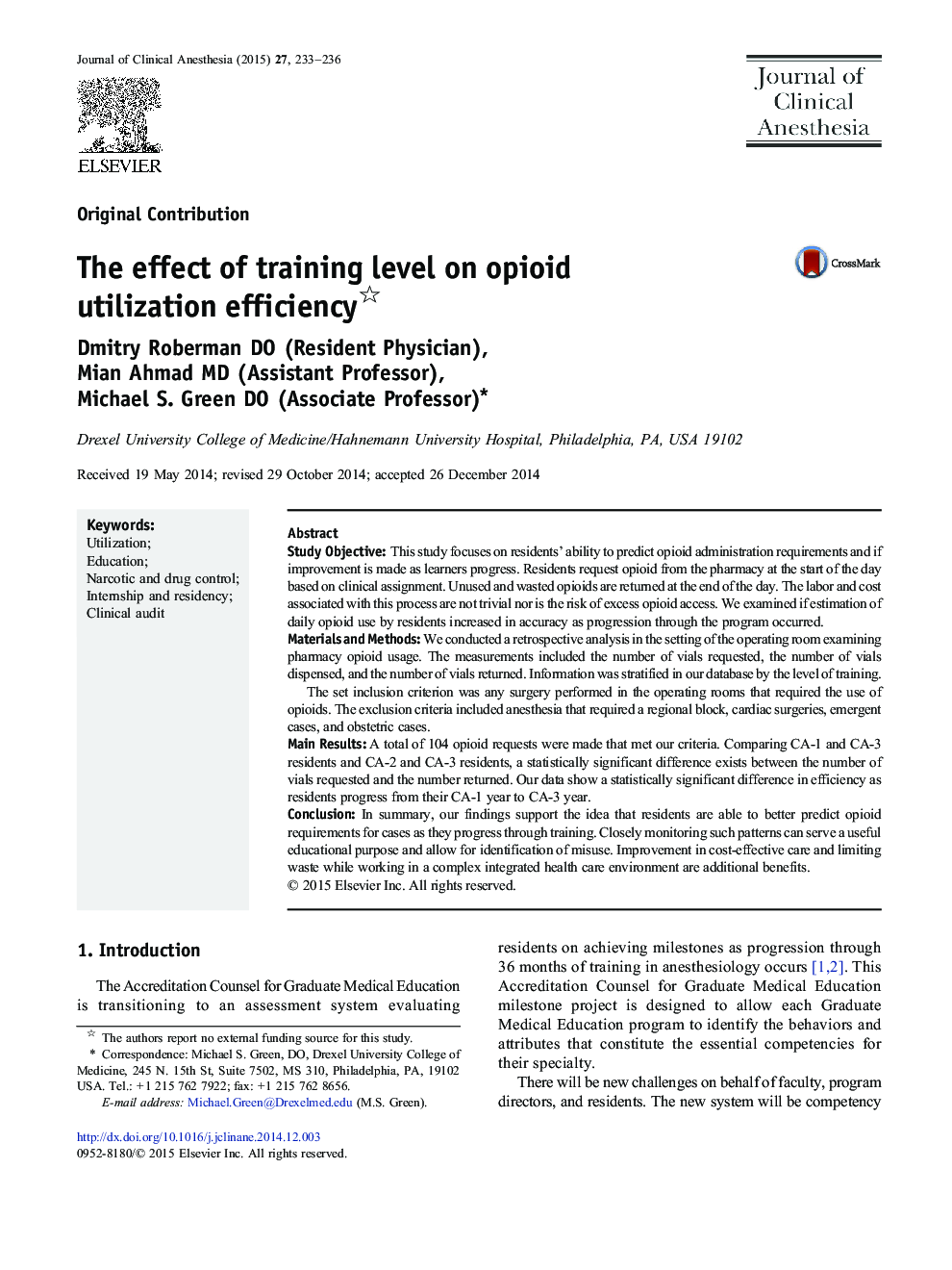| Article ID | Journal | Published Year | Pages | File Type |
|---|---|---|---|---|
| 2762706 | Journal of Clinical Anesthesia | 2015 | 4 Pages |
•Our findings support the idea that residents are able to better predict narcotic requirements for cases as they progress through training.•Closely monitoring narcotic utilization patterns can serve a useful educational purpose and allow for identification of misuse.•Improved narcotic efficiency displayed by senior-level residents may improvement cost-effective care and limit waste while working in a complex integrated health care environment.•The institution of training modules or lecture materials directed toward specific milestones may have a very positive impact on waste due to anesthesiology residents.
Study ObjectiveThis study focuses on residents' ability to predict opioid administration requirements and if improvement is made as learners progress. Residents request opioid from the pharmacy at the start of the day based on clinical assignment. Unused and wasted opioids are returned at the end of the day. The labor and cost associated with this process are not trivial nor is the risk of excess opioid access. We examined if estimation of daily opioid use by residents increased in accuracy as progression through the program occurred.Materials and MethodsWe conducted a retrospective analysis in the setting of the operating room examining pharmacy opioid usage. The measurements included the number of vials requested, the number of vials dispensed, and the number of vials returned. Information was stratified in our database by the level of training.The set inclusion criterion was any surgery performed in the operating rooms that required the use of opioids. The exclusion criteria included anesthesia that required a regional block, cardiac surgeries, emergent cases, and obstetric cases.Main ResultsA total of 104 opioid requests were made that met our criteria. Comparing CA-1 and CA-3 residents and CA-2 and CA-3 residents, a statistically significant difference exists between the number of vials requested and the number returned. Our data show a statistically significant difference in efficiency as residents progress from their CA-1 year to CA-3 year.ConclusionIn summary, our findings support the idea that residents are able to better predict opioid requirements for cases as they progress through training. Closely monitoring such patterns can serve a useful educational purpose and allow for identification of misuse. Improvement in cost-effective care and limiting waste while working in a complex integrated health care environment are additional benefits.
